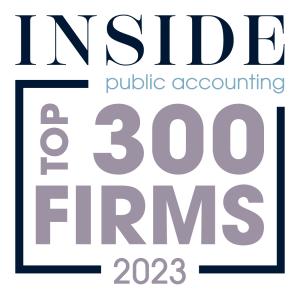As commercial developers look for sources of financing, studies seem to indicate that less than 50% of business owners are aware of the significant tax savings that can be utilized from their building or remolding projects. If you are a developer looking to build or improve, or you have already built or improved, read on because the tax laws can help you finance your dream project or recoup some of its previous costs.
For commercial developers, the tax laws that affect commercial building center around the depreciation rules.. As a quick background, as most business people know, the cost of property, namely, buildings, improvements, furniture, equipment and automobiles, are not permitted by law, to be deducted in its entirety in the year in which the expenses occurred. Instead, the expense must be depreciated over IRS pre-determined years based on the type of asset. Buildings and improvements are required to be depreciated over 39 years if it is a nonresidential property, and 27½ years if it is residential (i.e. apartment buildings.) Other depreciable assets are expensed over years ranging from five to fifteen, but the majority are depreciated over five or seven years.
Starting in 2003, for most tangible business property besides buildings, improvements and automobiles, the new law allows for a $100,000 special write-off known in tax jargon as “Section 179”, if the asset is placed in the service during the year, as long as it does not create a net loss for the company. In addition, aside from this special write-off, the 2003 tax act allows businesses to take a 50% bonus write-off of the cost of commercial leasehold improvements (restrictions apply) or whenever the asset is required to be depreciated 20 years or less. With the latter, this is allowed by itself or after the $100,000 special write-off. Therefore, for example, if one were to purchase a $150,000 machine, one would be allowed to write off up to $130,000 of this, or 87% of the cost. If the company would be in the 35% tax bracket, it just saved itself $45,500 in taxes which could be used to finance the cost of the machine.
You are probably wondering how this makes commercial construction easier for builders and their customers? The answer to this question lies in a concept that has become more popular recently, which unfortunately many CPAs and tax practitioners are not aware of. This involves a term called “cost segregation.” Up until a few years ago, when it came to depreciating buildings, the IRS considered all fixtures (i.e. wiring, plumbing) as part of the building itself requiring the longer depreciation period of 39 or 27½ years. In 1997 there was a tax case involving Hospital Corporation of America, in which the U.S. Tax Court decided that any components of a building that relate to tangible property, can be considered tangible property instead of part of the building. The outcome of this is that these components would be eligible for faster depreciation over a shorter period of seven to fifteen years which translates to tax savings. Typically, the more specialized the building, the more components there would be that would relate to tangible property. Therefore, specialized wiring for telephones, plumbing used for equipment, or air conditioning used for computers may be classified as tangible property.
While the IRS in the above-mentioned court case had acquiesced to the tax court’s decision in 1997, it was not always beneficial to recoup previous building costs since the implementation of cost segregation had some complications. Recently, however, implementation has become much more favorable, and with the new, generous tax breaks, cost segregation is becoming more popular.
But, be warned. The IRS is still closely scrutinizing these cost segregations. Consequently, the IRS contends that “cost segregations may not be based on taxpayers’ estimates or assumptions that have no supporting records.” Basically, the IRS is looking for significant basis in which to deem it a qualifying segregation. Typically, this means statements from builders, engineers or architects.
And this is where the builder could have an edge on the competition. As I mentioned, studies indicate that less than 50% of business are aware such a concept exists. A builder, when bidding on jobs, can have a marketing edge on its competition by offering itemized bills that break down the various components of the building into tangible versus building properties. This would be of no cost to the builder, yet for the customer, it gives them the added advantage of tax savings by writing off the components faster. Furthermore, because of the tax savings, customers would be able to help finance part of the cost of the project, thereby reducing some of the need for outside financing. When marketed properly, this benefit could help get a bid accepted. Builders can get guidance from knowledgeable tax professionals.
For those who are planning to construct a building or to do renovation work, it would be to your benefit to request that the construction company provide a breakdown of such costs so that you may take advantage of the tax savings and help finance the project. Illustration one shows the difference in savings between doing cost segregation and not doing it.
For those companies who have already constructed a building or have done renovation work, do not be dismayed. While the builder may not have offered to break down these costs, and even if your tax consultant did not suggest it, it is not tot late. There are some CPA firms, which, together with trained engineers and builders do cost segregation studies in which they examine the structure, and review the blueprints and plans of the building or improvements. Based on this analysis, they will make a professional determination as to the portion, if any, that relates to tangible property. Many companies have recouped large amounts of money due to these studies, and the savings were far more than the cost of the studies themselves. When done properly, cost segregations could boost your bottom line whether you are the builder or the customer. Now you can take advantage of the law.
David A. Landman, CPA, CFE
Senior Manager
Gorfine, Schiller & Gardyn, P.A.





